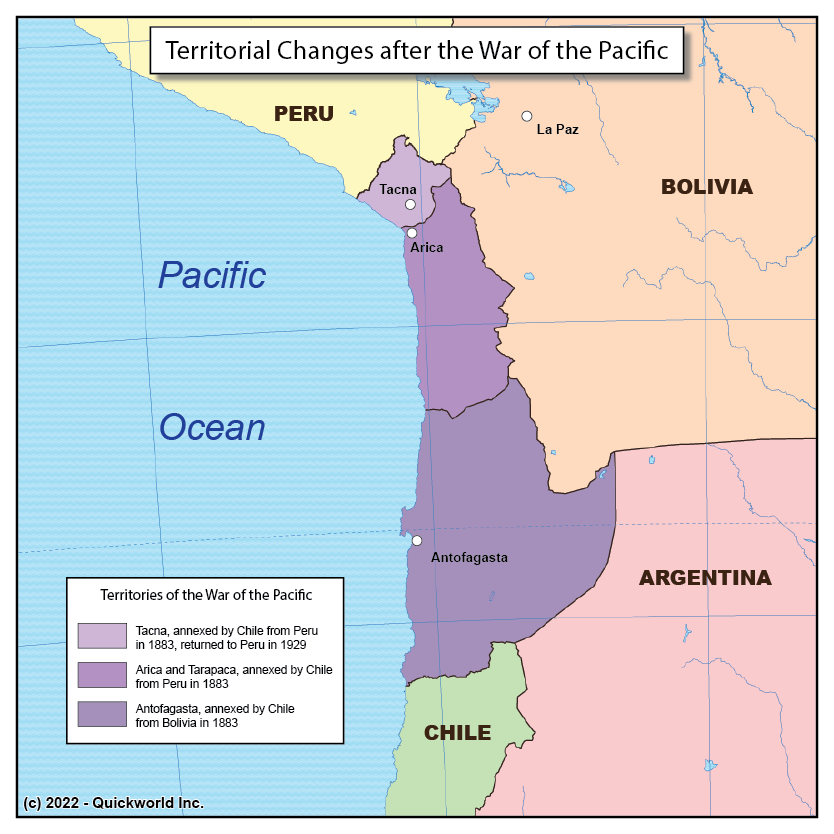Our Series on Historical Conflicts brings us to the War of the Pacific, which opposed Chile to Peru and Bolivia from 1879 to 1883.
The history of the Spanish colonization of South America is long and complex, and it left nine countries struggling to agree on their respective borders. While the area at stake in this war had been initially part of the Vice-Royalty of Peru, a direct Spanish takeover of the Inca Empire, the southeastern uplands of Peru fell under the jurisdiction of the Vice-Royalty of the Rio de la Plata when it was created in the late eighteenth Century. Chile, while being officially part of the Peruvian vice-royalty, had been largely autonomous as a Captaincy General for centuries.
The rapid succession of independence movements throughout the Spanish Americas led to those three countries disagreeing on the sovereignty of a band of land that reached roughly from the 18th to the 25th parallel South on the Pacific shore. Hostilities were started by Chile in 1879 and resulted in a Chilean victory, after which Chile controlled not only the entire coastal region of Bolivia, but also the southernmost provinces of Peru. Later treaties led to a partial return of Peruvian lands, but Bolivia's former Pacific region remained in Chilean control, which means that Bolivia is the only landlocked country in the World that maintains a navy. As of 2022, there are still talks between Chile and Bolivia over granting Bolivia an access to the Pacific.
The War of the Pacific


